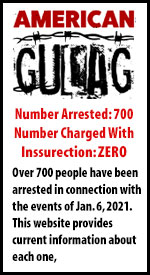Using Debt Verification And Debt Validation Letters To Respond To Collectors

By Mark Henricks, Daphne Foreman
Forbes.com
Say you are sitting around on a Sunday evening, getting ready to watch a professional football game on television, when the phone rings. It’s a debt collector, calling to demand payment of a debt you don’t recall owing. What do you do?
A typical response might be to hang up, shake your head and check to make sure the nachos aren’t overheating. But a better move might be to take a few seconds to ask for and write down the names of the caller and the debt collection company, as well as the company’s street address and phone number. Then, before you settle down for kickoff, make a note to send a debt verification letter.
Never heard of one? A debt verification letter is a powerful tool a consumer can use to fend off unscrupulous, abusive or simply mistaken debt collection efforts. It’s a document you can send to someone who says you owe money to inform them that you don’t recognize the debt, demand that they prove you owe it and instruct them to leave you alone.
Consumer Debt Collection Protections
It may seem unlikely that a simple letter can be part of an effective approach to dealing with misguided debt collection efforts. But it’s real. The mechanism is set up by the Fair Debt Collection Practices Act (FDCPA), a 1977 law Congress passed to rein in debt collectors.
When you send a collector one of these letters, the company is supposed to send back a debt validation letter supporting its claim. If it can’t or won’t, the claim is likely to be dropped. If that happens, you won’t get any more game-time interruptions, at least from this collector.
This is far from being a solution in search of a problem. About 70 million people—one in three consumers—were contacted about debt collections during 2020, according to the March 2021 annual report by the Consumer Financial Protection Bureau (CFPB), a federal agency charged with enforcing the FDCPA.
More than half of those consumers said the debt collector was mistaken. The main problem, reported by nearly half of those who claimed a mistake, is that someone else owed the debt. Other reasons included never receiving the product or service the debt was supposed to pay for or experiencing identity theft. Some said they’d already paid off the debt or discharged it through bankruptcy.
The debt verification letter is the consumer’s first defense against errant debt collections. Not using it is often—although not always—a mistake. If you don’t send one of these, a debt collector may assume the debt is valid and continue pursuing collection. If the debt is not legally valid and the debt collector has little or no chance of ever forcing you to pay, a debt verification letter can quickly get them to back off.
Verification Letter Basics
Both the letter you send to a debt collector and the letter the collector sends back may be called either debt verification letters or debt validation letters. There is no strict labeling protocol. However, it seems confusing to use the terms interchangeably. This article will refer to the letter from the borrower as the debt verification letter and the letter from the collector as the debt validation letter.
A debt verification letter doesn’t have to say anything fancy. Just state that you’re responding to a collection effort, you don’t recognize the debt, you are demanding they prove you owe it and, if they can’t, to stop contacting you. That’s it.
You can find various templates for debt verification letters online. Some are of considerable complexity and address several other matters. You can, for instance, request contact information for the original creditor. This could be useful because debt collectors typically just purchased old debts to collect whatever they can.
The debt collector may know little or nothing about the transaction that originally created the alleged debt. And, challenged to produce a document such as a note or contract backing up the debt, the collector may just give up the fight. But a basic debt verification letter can also accomplish the same thing.
Timing is an important and specific concern. The consumer has 30 days to send the debt verification letter. If you don’t attend to it within a month, the debt may, again, be presumed to be valid and collection efforts may continue. Then the debt collector has five days to respond in writing. Failing to do that doesn’t mean you don’t owe the money, but it could be grounds for a lawsuit against the collection agency.
How you send your letter also matters. Email, fax, regular mail and other untracked methods are not good. You need a way of showing that you mailed the letter, when you mailed it and that it was delivered to the recipient. U.S. Postal Service certified or priority mail can provide this level of tracking.
Validation Letter Basics
The validation letter is the one from the debt collector back to you, the supposed debtor. It is supposed to support its claim with some sort of proof. The FDCPA is a bit vague here, but supporting documentation could consist of, for instance, a copy of a court judgment affirming the debt. If you ask for the name and address of the original creditor, which may be a credit card company, bank, retailer, utility, etc., the validation letter is supposed to include that.
The original verification letter the debtor receives will rarely include any proof that the original creditor has formally assigned the debt to the collection agency. Agencies buy these debts for steep markdowns, commonly pennies on the dollar, hoping that they’ll be able to collect enough to show a profit.
However, they don’t usually arrange to have the creditor formally assign the debt to the collector. Lacking that, they may have little ability to pursue the debt beyond making simple demands. As a general rule, debt collectors want to avoid costly court appearances and, if they don’t have the required documentation, they are even less likely to sue.
A verification letter is a good way to weed out fraudsters and con artists. Scammers rarely respond to a verification demand. Even legitimate debt collectors have to stop contacting you about a debt once they have received the verification letter, at least until they respond with a validation letter.
If you get a validation letter, it may not verify much. Skepticism is in order here. If the letter consists of pages of what sounds like complicated lawyer language, it may well be an attempt to overwhelm you.
If you do get back some solid validation, such as a contract with your signature, that doesn’t mean you must or should pay whatever they’re asking. You can also demand an itemized statement of the amount. It may include attorney’s fees or other charges you never agreed to pay and probably don’t have to pay.
Even if the debt does appear to be valid, well supported and not inflated, you may still not have to pay because of the statutes of limitations on debts. States have varying laws on this, but the term usually runs three to six years. Check with your state attorney general’s office to be sure. If a debt was incurred longer ago than the statute of limitations states, it is probably no longer valid and you won’t have to pay it.
Validation and Verification Letter Limitations and Benefits
Validation and verification letters can be helpful but won’t solve all debt collection problems. For example, a collector can continue trying to collect a debt that is past the statute of limitations. They just can’t force you to pay it.
Also, no matter what the result of your exchange of verification and validation correspondence, it won’t necessarily affect your credit report. A debt someone is trying to collect may not even show up on your credit report. If it does appear there, a bad debt can be on your report for up to seven years, whether validated or not. The same goes if a debt is barred from collection because the statute of limitations has run out.
Sometimes, however, debt verification letters are just the ticket. A debt verification letter can be highly effective in a genuine case of mistaken identity, for instance. Also, if a debt is many years old, a debt collector may not be able to produce any documentation showing you actually owe it.
Similarly, when a collector has bought a debt from the original creditor, it may also be difficult for the collector to document it. In these cases, a demand to stop bothering you about the debt is likely to be effective.
Although debt verification letters are powerful, sometimes, you may not want to send one. For instance, if you plan to pay off the debt, you may not want to demand proof that you owe it. It may be faster and easier simply to offer a discounted lump sum payment rather than make the collector jump through hoops for no purpose.
Also, if a debt is about to go past the statute of limitations, it may be wiser to do nothing. It’s possible that in your communications you might, for instance, inadvertently acknowledge the debt. This could restart the collection time period. Another time to consider skipping the verification letter is if the demand comes from the original creditor rather than a debt collection agency. Presumably, the original creditor has all the paperwork handy. You might be better off trying to quickly cut a deal.
Your Rights as a Debtor
Debt verification and validation letters are two of many FDCPA protections. Collectors are also restricted from calling before 8 a.m. or after 9 p.m. local time, contacting you at work if you tell them not to, telling anybody else about your debt, harassing you or lying about what you owe. They can’t claim to be members of law enforcement, threaten you with arrest, use a fake name or try to slip inaccurate information about you into your credit report.
There’s much more in the FDCPA designed to give hard-pressed consumers a rest from predatory collectors. If a verification letter doesn’t help, or if you have any concerns about a collector, you can complain to the Federal Trade Commission or your state attorney general. Meanwhile, you can make a note to send that letter and go back to your game, secure in knowing you have real options to defend yourself and your finances.





















